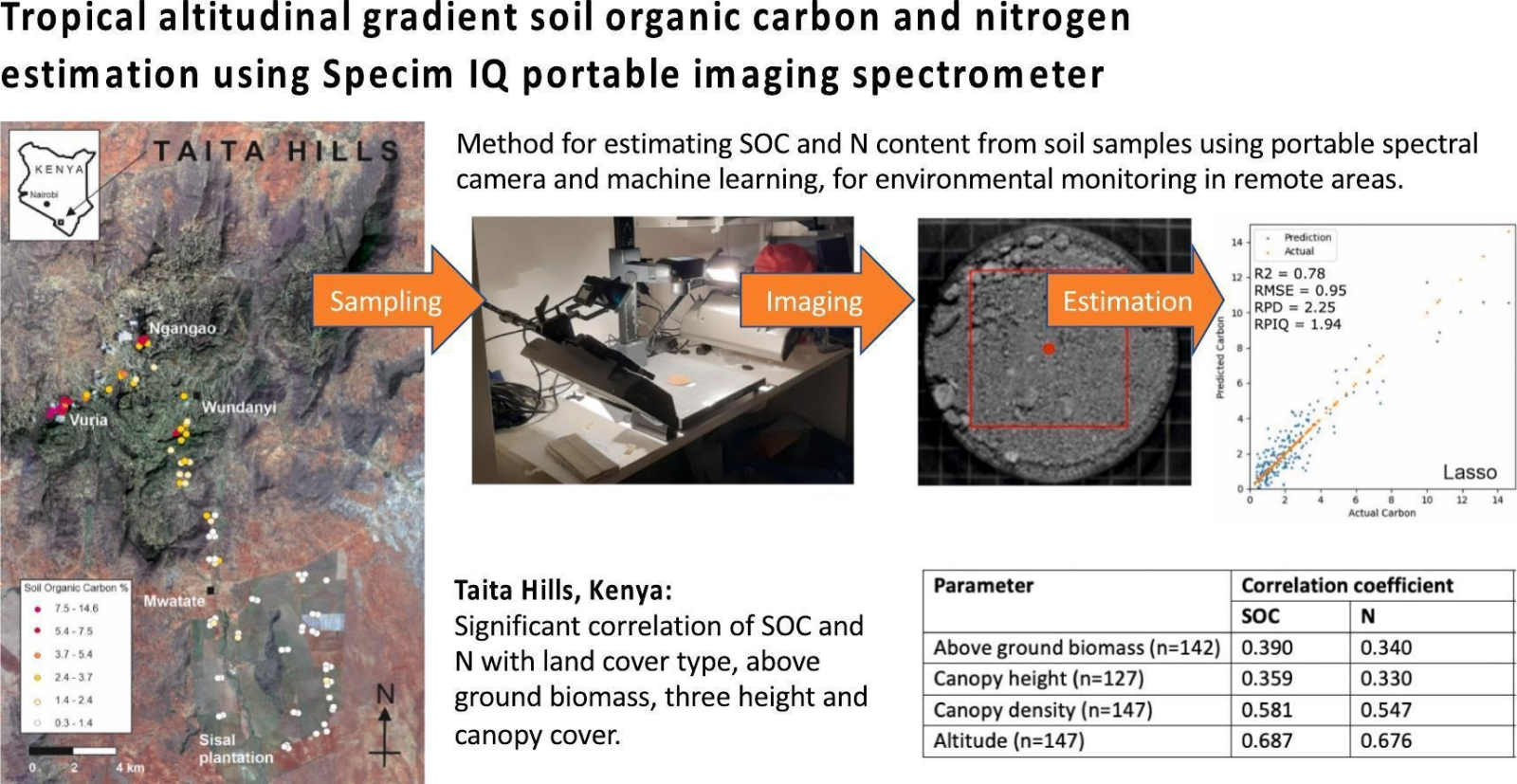July 15, 2023 | Journal of Cleaner Production
Efficiently monitoring soil organic carbon (SOC) and nitrogen content is essential for understanding and mitigating climate change and supporting sustainable land management. Historically, SOC estimation has primarily relied on labor-intensive laboratory analysis. However, as the need for large-scale, cost-effective monitoring of soil properties in remote and diverse environments has grown, there is a demand for innovative and mobile techniques.
In a collaborative effort, researchers from the University of Helsinki, the Helsinki Institute of Life Science (Finland), and Wuhan University (China) explored the potential of a portable hyperspectral imaging spectrometer, Specim IQ, operating in the visible-near infrared wavelength range. Their aim was to develop a practical approach for estimating SOC and nitrogen content across tropical altitudinal gradients, enabling more accessible and efficient monitoring of soil properties.
To achieve this, the team collected 191 soil samples from Taita Taveta County, Kenya, representing a diverse altitudinal gradient encompassing five typical land use types: agroforestry, cropland, forest, shrubland, and sisal estate. These soil samples were meticulously imaged using the Specim IQ hyperspectral camera under controlled laboratory conditions, and their carbon and nitrogen content was quantified through combustion analysis.
The study employed machine learning techniques to establish a relationship between the spectral images and the soil properties of interest. It also investigated the automatic selection of informative wavelengths and the quantification of prediction uncertainty. Remarkably, all five alternative methods examined demonstrated robust performance, achieving a cross-validated R2 value of approximately 0.8 and a root mean square error (RMSE) of just one percentage point. These outcomes underscored the feasibility of the proposed spectral imaging approach and the associated computational pipeline.
By showcasing the efficacy of this innovative imaging setup, the research offers a promising pathway toward cost-effective and mobile monitoring of SOC and nitrogen content in remote and environmentally diverse regions, providing valuable insights for land management and climate change mitigation.
Read more: Tropical altitudinal gradient soil organic carbon and nitrogen estimation using Specim IQ portable imaging spectrometer
Graphical abstract





